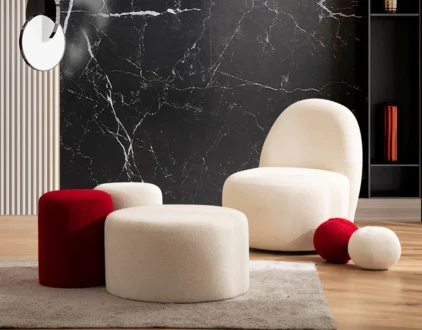If you’re already an avid planter, you’re well aware of the many plants that bloom into beautiful vibrant colors during the Spring and early months of the Summer. While the Spring time is widely considered the most beautiful season of the year, there are plenty of flowers you can plant to make your home garden pop during the Fall as well. In fact, some of the prettiest flowers known to man are perfect late editions to your landscape, and ideal for planting in the dog days of Summer from mid August through early September.
Whether you’re hard at work making your garden explode with personality all year long, or just running behind schedule with your planting this year, it’s never too late to throw a few evergreen bushes, annual bloomers, or low-maintenance perennials into the mix. There are plenty of flowers perfect for this exact purpose, though we feel quite certain that the following 9 picks are the best. Without any further preamble, let’s dive right into our list of the best autumnal blooming flowers that your garden needs this Fall.
Blanket Flowers
Blanket flowers are a genus of Asteraceae plants named for their ability to spread out and cover a wide area with their bright, vibrant color patterns. These perennials, which are native to North and South America, are absolutely perfect for the low-maintenance garden, as they are known to thrive in imperfect conditions including relatively poor soil quality and light watering. The only thing these orange-yellow flowers require to thrive is tons of sunlight, so they’re perfect for planters who live in the American Southwest. Unlike some other flowers which dull their appearance when not in bloom, blanket flowers tend to turn a pale shade of yellow after reaching their peak, offering a nearly year-round visual that will keep your landscape looking fresh and colorful.
Asters
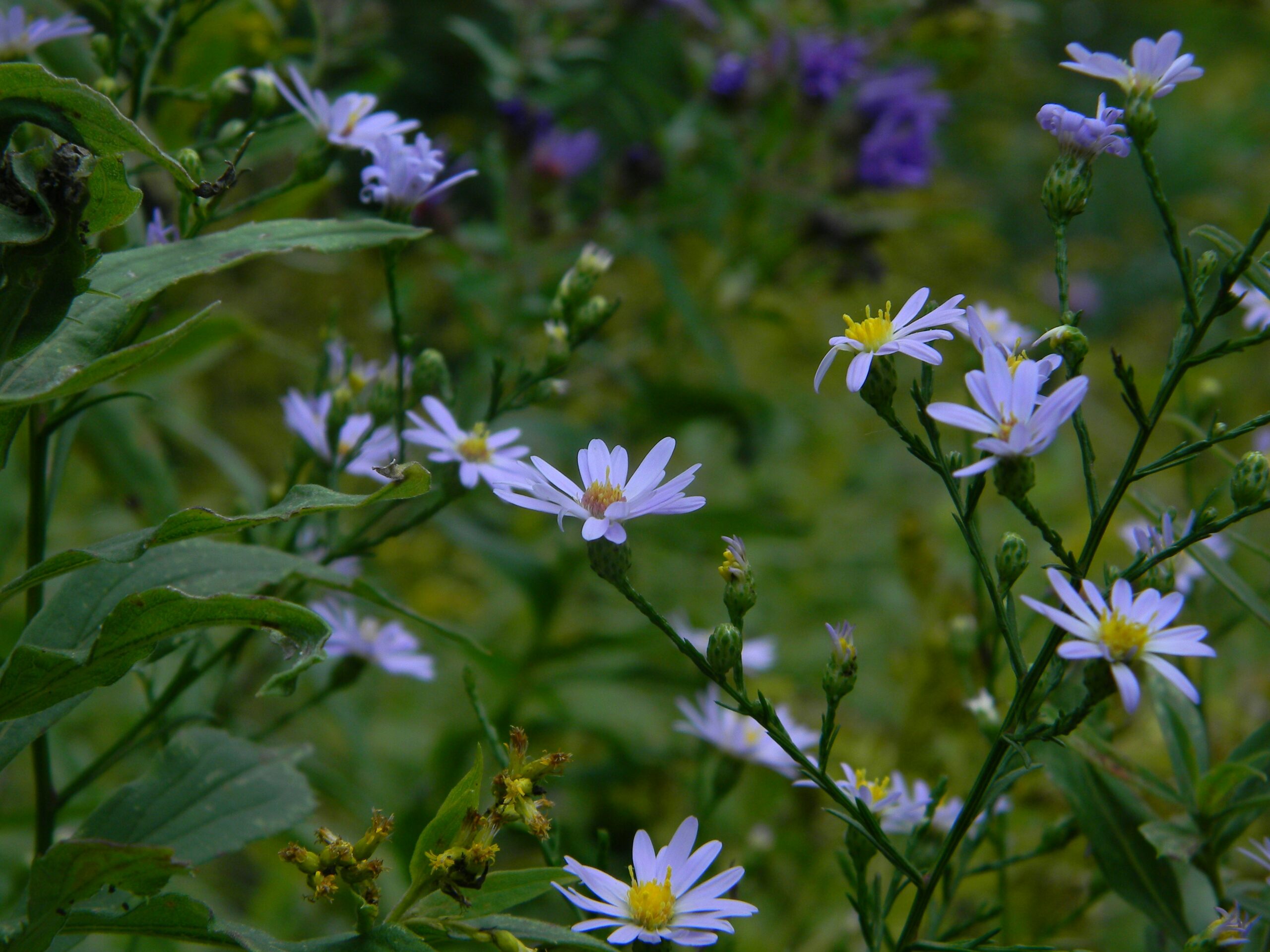
Asters are often nicknamed the “grand finale” flower, as they are one of the latest-blooming plants you can find. The delightful lavender shaded perennials are known to stay bright and vibrant through late October and beyond, and can occasionally survive the whole Winter if cared for properly. Like blanket flowers, asters are excellent pollinators, and tend to attract bees and butterflies in droves. While their color and attractive qualities are well established, many gardeners have a soft spot for these plants due to their repellent abilities as well, as asters are known to keep deer and pests away.
Dahlias
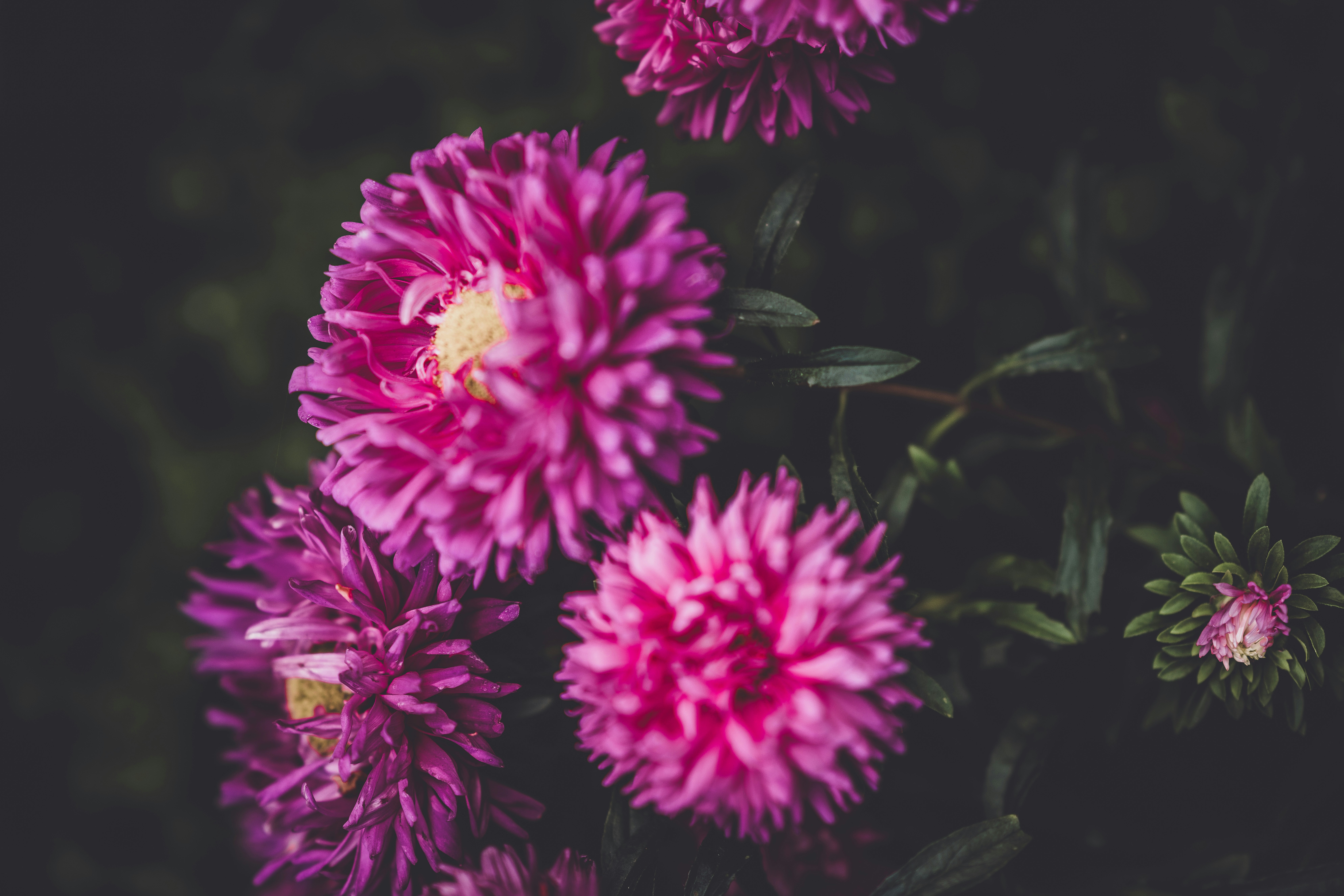
If you’re looking for a thick, bushy flower that can survive harsh Winters in cold zones, look no further than the humble dahlia. This perennial offers a variety of colors to round out your beautiful bouquet, ranging from gradients of red-orange to a dark wine-colored maroon. These are the most common colors, though rarer dahlias offer just about every spectrum of the rainbow. Dahlias begin their bloom in the mid-Summer months and continue to spread throughout the whole of Autumn, making them quite ideal for those who want a distinctive, well-defined look in their shrubbery for long periods of time.
Like many other flowers on this list, the dahlia is likely to thrive in the American Southwest, as it is native to Mexico and Central America. Still, dahlias are resilient and easy to manage, so long as they get as much sun as possible, so they can be planted across most locales if you’re economic with your placement.
Marigolds
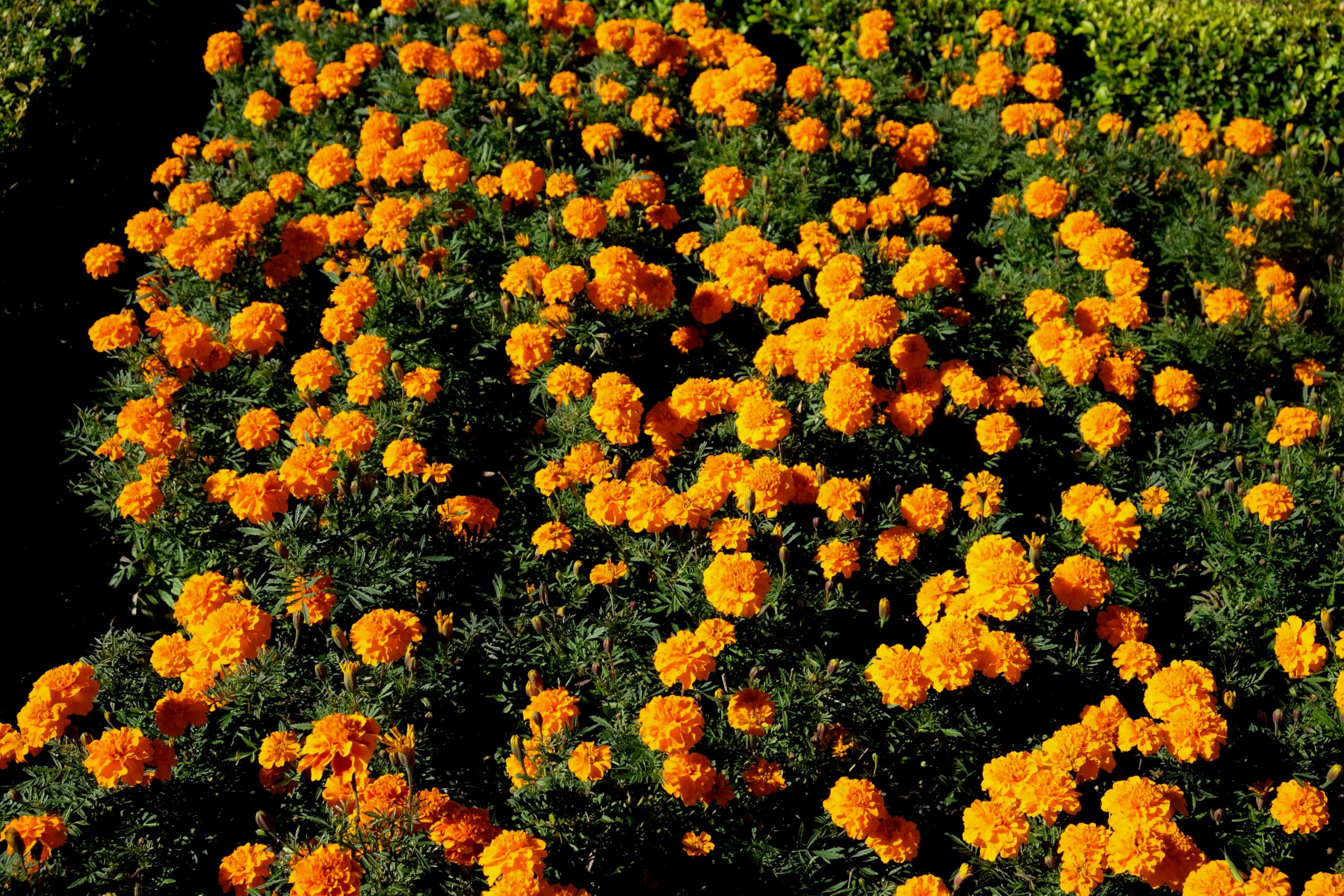
Much like asters, marigold flowers are widely hailed for their ability to keep deer and other pests away, due to their distinct and pungent smell. This scent can be quite alluring to our human olfactory system, though for some reason rabbits and other garden-ruining wildlife find it repulsive. These gorgeous brassy flowers are late bloomers, capable of withstanding scorching hot temperatures and surviving well into the Fall. They also come in three common forms, being African, French, or Signet. Signet marigolds are the smallest of the three, often sprouting only a few inches in height and touting a single row of petals. African marigolds are the largest of the bunch, spreading far and wide, while the French variety offer a more fancy-looking ruffled edge, like that of a French ruffle blouse.
Roses
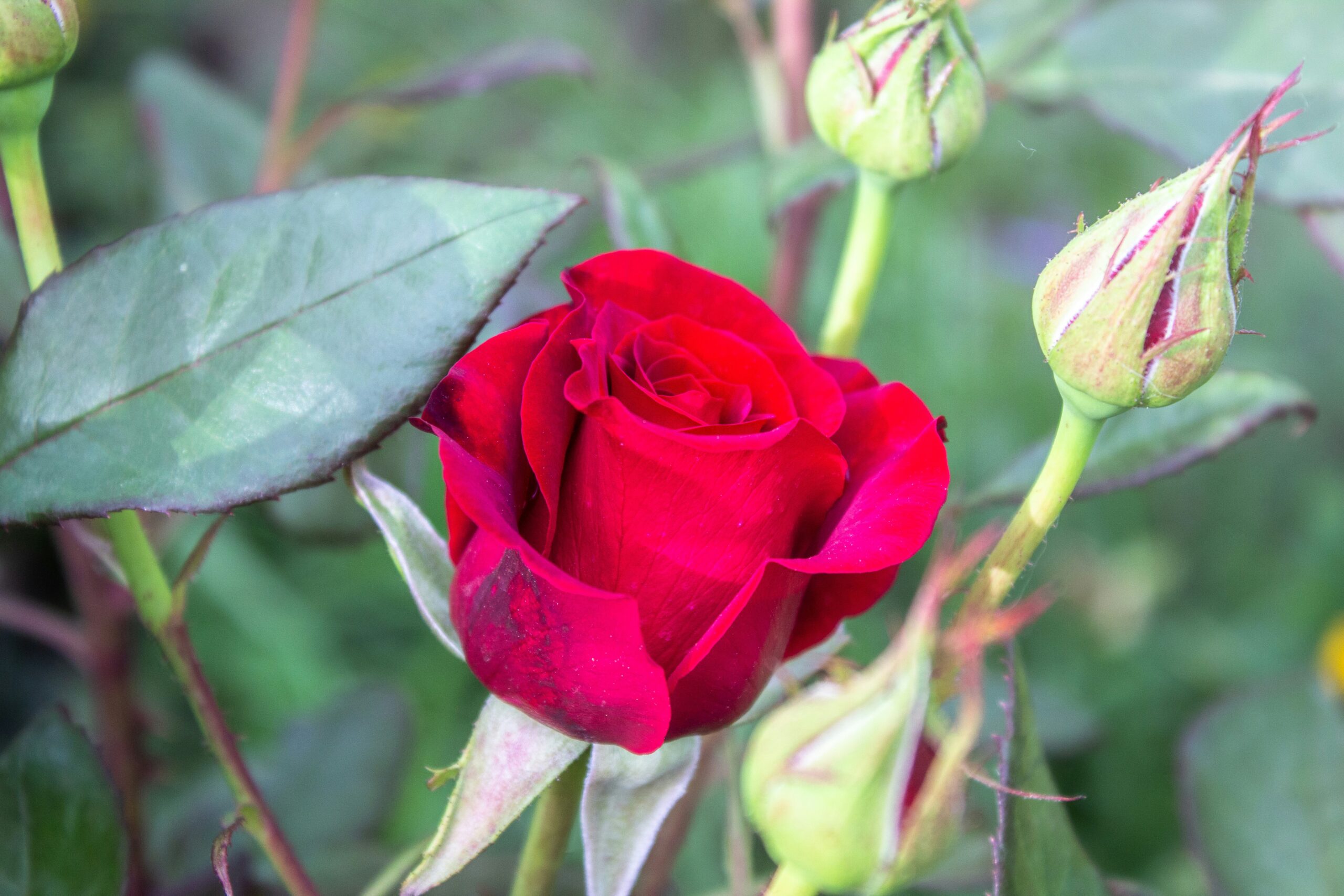
You’ve probably been told a million times to stop and smell the roses. Well, thanks to your tardy-to-the-party gardening habits, now might finally be your chance. Landscape roses, also known as shrub roses, are the perfect annual hybrid for those seeking late-blooming vibrance in their home garden. Like many other flowers on this list, roses offer a variety of bright colors and a delightful aroma sure to provide your landscape with tons of personalized flavor through the end of Summer and the better half of the Fall season. Just remember, every rose has its thorn, so this plant might not be perfect if you’ve got young kids running around near your garden this year.
Chrysanthemums
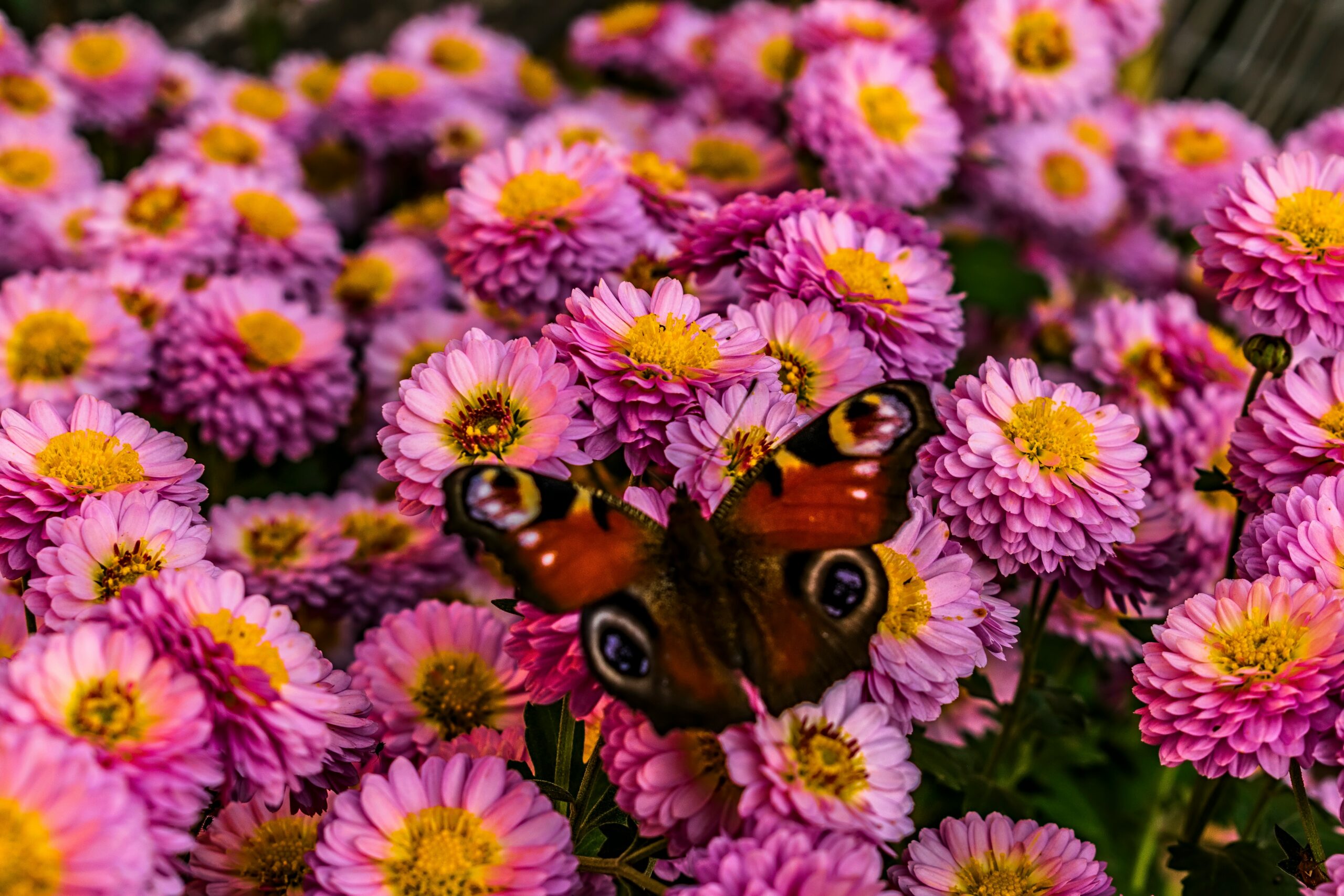
Chrysanthemums are a universally beloved flower, known for their ability to spruce up a sparse bouquet, bloom throughout most of Autumn, and offer a low-cost alternative to something like roses or petunias. Even if you’ve never planted these flowers yourself, you’ve certainly seen them everywhere from city projects, to old Italian oil paintings, to grocery store bouquets sold before major holidays like Valentine’s Day or Mother’s Day.
While chrysanthemums follow similar blooming trends to most of the plants on this list, these flowers differ greatly from the nature of blanket flowers and dahlias. To keep your mums happy, be sure to keep them out of harsh, direct sunlight, and offer plenty of water throughout the whole of Fall. This may require slightly more work than some of the other entries here, but it offers some prime coverage for areas of your garden that don’t receive a ton of sunlight.
Petunias
Like roses, petunias are generally considered some of the most popular flowers due to their exceptional scent and eye-catching colors. These flowers are also perfect for green-thumbed planners and last-minute gardeners alike, as they bloom from Spring until the first frost of the season. Petunias grow in large bunches comprised of small multicolored buds, ranging from pink-purple hues, to crimson red, to pristine white.
They generally require a great deal of direct sunlight to thrive, though there are some specific genuses of this plant that can still look wonderful in the shade. Unlike most of the sun-craving plants on this list, petunias also require plenty of water, especially as they reach their first bloom, so be sure to keep a close eye on their topsoil for moisture, or lack thereof.
Hydrangeas
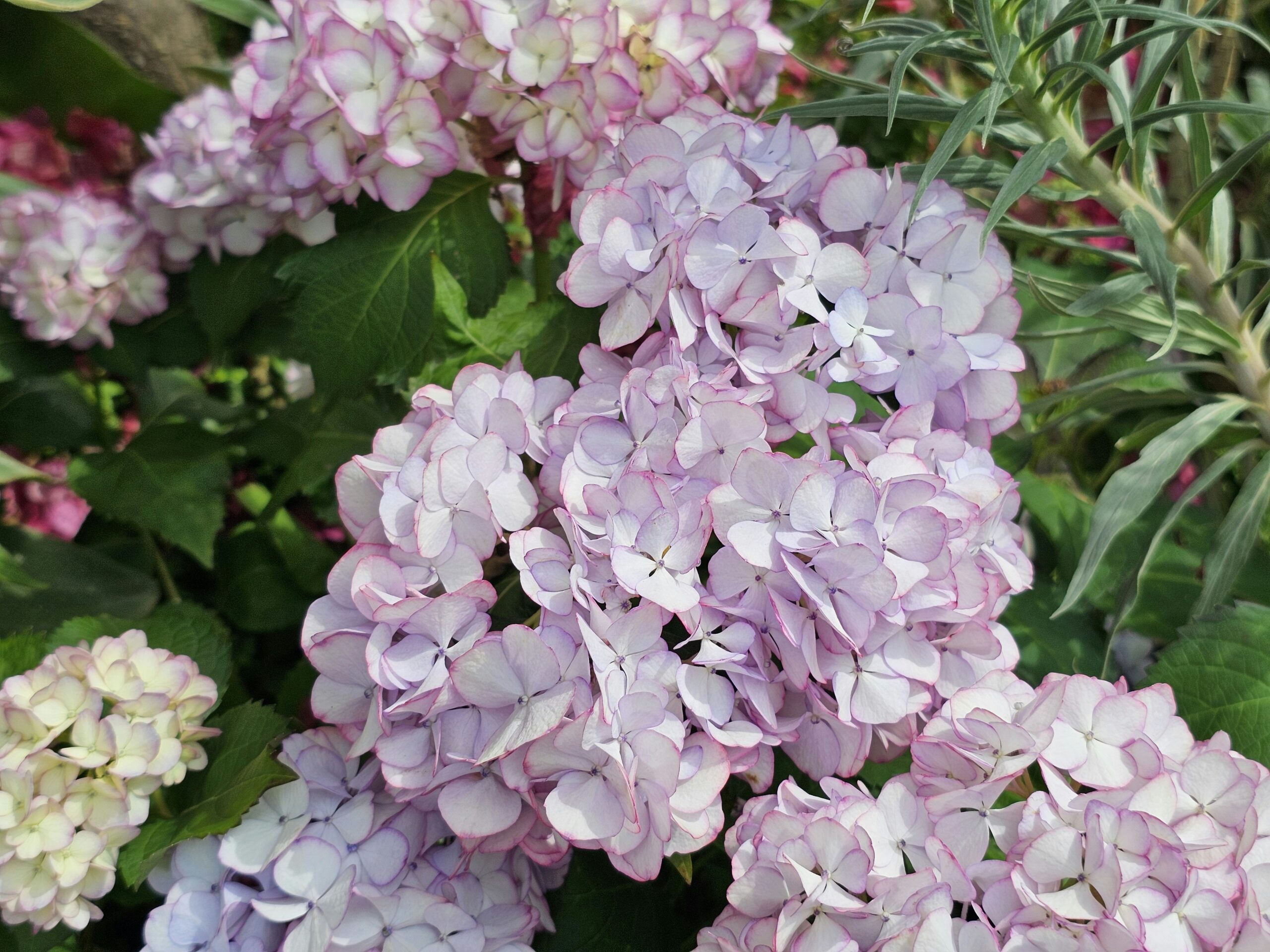
If you’re looking for an elegant but resilient flower, capable of surviving in extreme conditions and occasionally remaining in bloom from the Spring to the Winter, look no further than hydrangeas. These delightful perennials are super vibrant, super low maintenance, and positively brimming with gorgeous shades. Unlike most flowers, which offer a variety of colors through selective breeding, hydrangeas generally grow into their colors based on external factors like the amount of sunlight they receive or the level of acidity in your topsoil.
They tend to do best in partial shade, but half the fun of hydrangeas is in experimentation, as they are known to weather just about anything you throw at them. While hydrangeas are generally considered to be perennials, they offer something of an all-round build, remaining intact and in bloom all year long, as well as they’re properly taken care of.
Sunflowers

Rounding out our list of Autumn plants perfect for the garden, we have a personal favorite in sunflowers. Unlike some of the varied plants mentioned earlier in this list, sunflowers offer an extremely uniform bloom, which sees large black centers full of seeds flanked with a ring of sun-yellow petals, perfect for brightening up your day. Sunflowers are known to begin blooming in the early to mid Summer when they can get as much sun as possible, though they can continue blossoming throughout the Fall as long as you water and prune them properly.
These flowers have an almost magical effect on their surrounding landscape, harnessing the power of the sun to soak up harmful toxins in the soil including radioactive waste. While that hopefully isn’t an issue in your neck of the woods, it’s nice to know that the effects of sunflowers aren’t relegated only to making you feel good when you see them coming to a head. No matter how you plant this year, it’s always important to pick flowers that are right for you, including those that beautify your landscape, offer comprehensive coverage, and bring you personal joy. As far as we’re concerned, you couldn’t do much better than sunflowers on all fronts.
popular posts
Decorate
Access design inspiration that infuses personality and culture into your spaces.
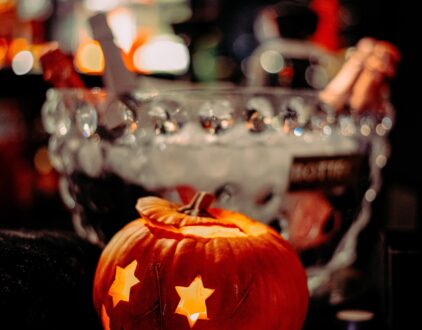
Elevate Your Upcoming Halloween Soirée With These Spooky Decorations
by Brittni Williams | August 18, 2023
FOLLOW ALONG ON INSTAGRAM
#homeandtexture
Find us on social for more home inspiration where culture, personal style, and sophisticated shopping intersect to help you create a home where you love to live.


